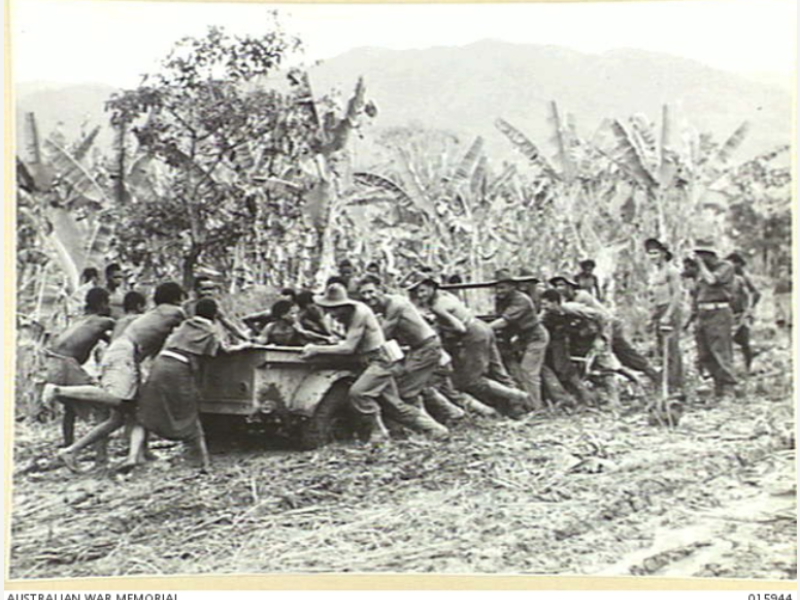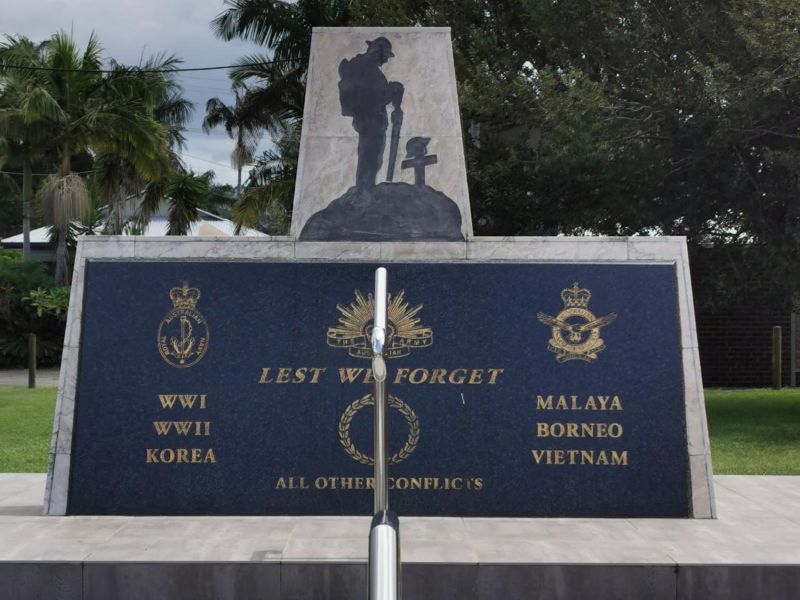Private Noel Daniel Maher, 2/10th Australian Infantry Battalion
Noel Maher was born in Mullumbimby, in the Northern Rivers region of New South Wales on 16 December 1923, the son of Daniel and Sophie Maher. Noel had six siblings Mary, William, Patrick, Mercia, Veronica and Paul.
Noel spent his early years at Mullumbimby, in a house on Station Street, next door to his cousins. His maternal grandfather, dairy farmer Bill Hilan, had built three houses in a row on Station Street for three of his married daughters and their families.
During the Depression, Noel’s father was a labourer on the railways. In 1937, he was offered a job as a fettler at Chakola near Cooma. The family moved from the warm, lush north coast to the bleak plains of the Monaro in the state’s south. They later moved to Wollongong.
As a teenager, Noel was a clerk in a garage in Cooma when he was called-up for the Militia on 9 September 1941. On enlisting, his year of birth was given as 1922 rather than 1923; he was 17 years old.
He served as a trooper in the 7th Light Horse, a motorised light horse unit raised with men from the Canberra–Goulbourn district. In September 1942, Maher volunteered for the Australian Imperial Force with 120 men from his regiment and transferred to Queensland’s 11th Motor Regiment.
The 11th Motor Regiment spent much of 1943 training in Gympie. In early July, ten officers and 360 other ranks were transferred to the veteran 7th Division’s 2/10th Battalion, then at Ravenshoe on the Atherton Tableland.
A South Australian unit, the 2/10th Battalion had served during the siege of Tobruk in the Middle East in 1941 before moving to Papua in 1942, fighting first at Milne Bay and then in the bloody beachhead battles of Buna and Sanananda in December 1942 and January 1943. According to the 2/10th Battalion’s unit historian, the infantrymen christened the Queenslanders and New South Welshmen the “Forty Thousand Horsemen”.
In August 1943, the 2/10th Battalion returned to Papua, initially stationed in Port Moresby.
From September, units from the 7th Division were heavily committed to the Allied offensive in New Guinea, capturing Lae and moving into the Markham and Ramu valleys. On 1 January 1944, the 2/10th moved to Dumpu. The battalion took up positions on the narrow razorback ridges of the Ramu Valley.
The 2/10th spent January patrolling and acclimatising to the conditions and terrain. During this time, the Australian forces planned to take the “Shaggy Ridge” and surrounding territory. It was taken but in later fighting on 27 January, Maher was killed as his platoon observed a Japanese position consisting of pillboxes and trenches.
By the time the area was cleared on 1 February, 16 men had been killed or died of wounds, and 27 wounded.
Noel Maher was 20 years old.
Today, his remains lie buried in Lae war cemetery in New Guinea. He is one of six men from the Canberra region remembered on the 2/10th Battalion Memorial Cairn in Eddison Park, Woden.
Image: Australian troops and locals pull a jeep out of the mud, near Lae, Papua New Guinea, October 1943.

 Australian War Memorial
Australian War Memorial